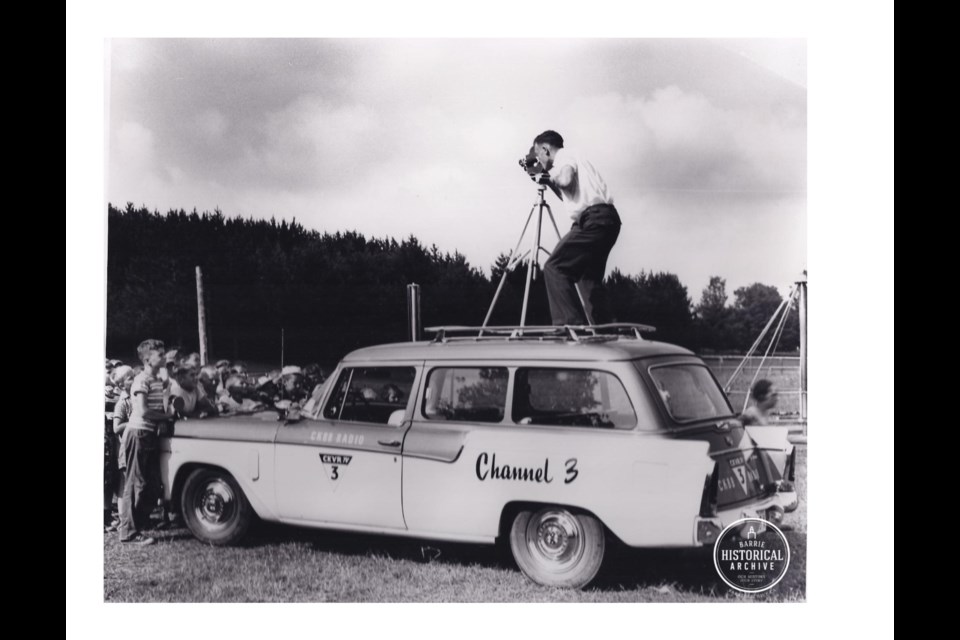What’s your earliest memory of television? I remember one black and white set in the living room and four channels on a good day! Our second set, one of those wood veneer floor models, had channels up to 13 “for the future.” Only CKVR could be counted on to come in fairly clearly.
This modern appliance was always under my father’s control. He decided what we would watch and when, and for him, seeing the news was paramount. Every Sunday, he switched off ‘The Wonderful World of Disney’ half way through, despite the loud protests of us kids, in order to get the local news.
My siblings and I liked to lie on our stomachs on the shag carpet in front of the TV, a position I wouldn’t prefer today, while our mother warned us about the perils of sitting too close to the set. “Sit back a bit, or you’ll end up needing glasses!”
This was the late 1960s, and a television was still luxury item, only a bit more than a decade past being just a novelty. By then, most homes had one. One television, one car and one phone, unlike today.
Television was invented a lot earlier than you might think. The race to create transmittable moving images started as far back as the 1800s, and first attempts utilized a spinning disk with holes that scanned a portion of an image and sent it via telegraph lines. The term ‘television’ was used first at the World Fair in Paris in 1900.
The science stumbled along for another thirty years, leaving the mechanical disk behind and adopting an electronic system involving a cathode ray tube, something that I don’t pretend to understand. This breakthrough revolutionized the television industry.
Why didn’t we see televisions appearing in our living rooms in 1940? The Second World War. Research had advanced enough by 1939 that there were half a dozen small TV stations operating in the area surrounding New York City. When the Americans joined the war, all television research ceased and civilian broadcasting virtually stopped.
When the war ended, television rapidly rose in popularity. At first, only Canadians living near the American border could hope to receive a TV signal as Canada had no stations of its own. That changed in 1952 with the birth of the CBC. Until 1960, all Canadian radio stations had to be CBC affiliates.
Microwave towers began to dot the landscape between Buffalo and Toronto which made purchasing a television in Barrie worthwhile for the first time.
Local appliance shops were eager to educate the public about this new entertainment medium. Eplett’s Electric at 139 Dunlop St. offered a free booklet entitled ‘What You Should Know About Television’ and also invited their customers to book a seat for one of their in-store General Electric sponsored Television Theatre events.
“This free booklet gives a brief history of the advances that have been made in Television … a simple explanation of the miracle of the picture on your TV screen … features to look for when buying a TV set … plus practical tips on TV installation, operation and reception.”
In 1955, Ralph Snelgrove launched CKVR on Channel 3 in Barrie. This exciting undertaking allowed 200,000 more people from Barrie and surrounding areas to finally get into the television era.
Each week, the Barrie Historical Archive provides BarrieToday readers with a glimpse of the city’s past. This unique column features photos and stories from years gone by and is sure to appeal to the historian in each of us.



